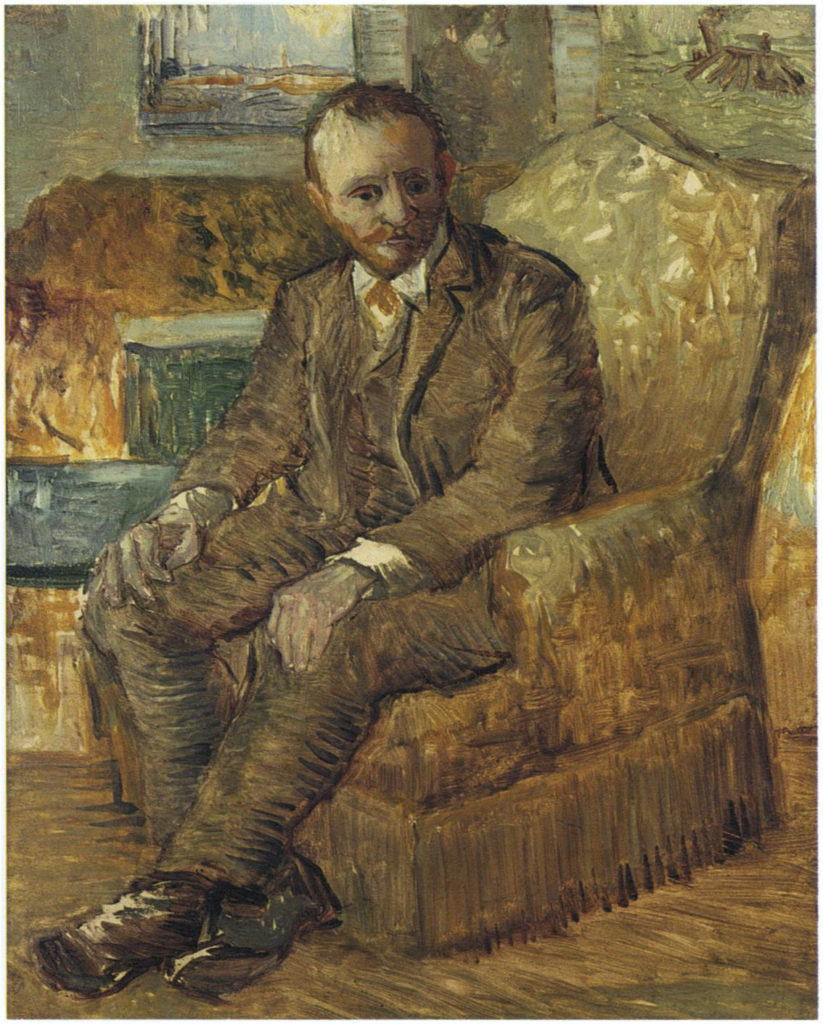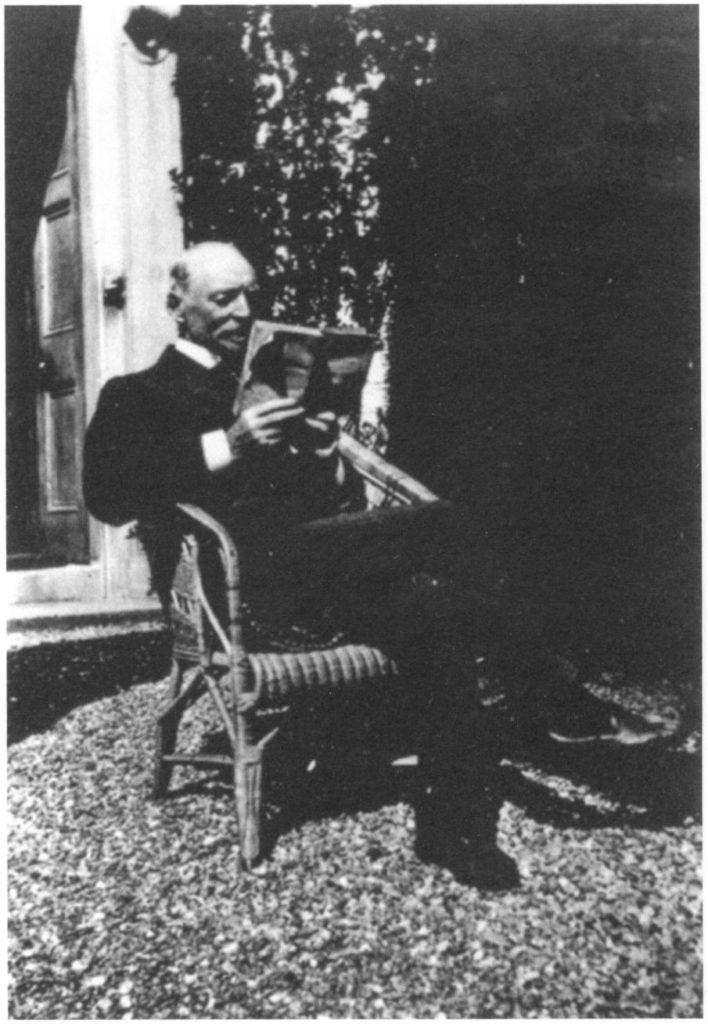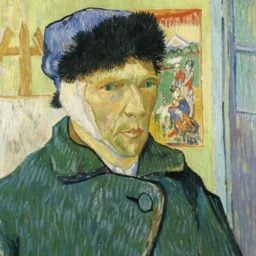Vincent Van Goghs Inability to Network With Art Buyers
Here'due south a hot new conspiracy theory for you lot: Was Vincent van Gogh really… Vincent van Gogh? The famous creative person was in one case close friends with Scottish art dealer Alexander Reid, and the two looked so much alike that van Gogh's portraits of his dopplegänger were misidentified as self-portraits for years.
Now, a new book suggests the possibility that the ii men, both depressed, agreed to swap lives, with van Gogh returning to Scotland and a successful career every bit a dealer—while Reid went on to cut off his ear and ultimately accept his own life later painting such masterpieces equallyStarry Night.
Scottish painter Archibald Standish Hartrick (1864–1950), who knew both men, wrote of their remarkable resemblance in his 1939 memoir, A Painter'due south Pilgrimage Through Fifty Years: "The likeness was then marked that they might have been twins. I oftentimes hesitated, until I got close, as to which of them I was meeting. They fifty-fifty dressed somewhat similarly."
Information technology's also believable, technically speaking, that the two could have swapped professions. Before dedicating himself to art, van Gogh, who came from a family of art dealers, was employee at the renowned Goupil & Cie gallery in Paris from 1875 to 1876. For his part, Reid was painter earlier he began selling the work of others.
All the same, a physical resemblance is one matter, just to think a Scott and a Dutchman could have traded lives without anyone being the wiser is another. But that is precisely is conspiracy theory presented by Philip Hook, Sotheby's senior international specialist in Impressionist & Modern fine art, in his forthcoming bookRogue's Gallery: The Ascent (and Occasional Fall) of Art Dealers, the Hidden Players in the History of Fine art (due out October 31). He writes:
When Reid suffered a romantic disappointment and confided it to Vincent, such was their closeness that Vincent—not feeling very positive about life either—proposed that they should commit suicide together. Afterward a dark's heavy drinking, they idea meliorate of the plan. That much is certain. Conspiracy theorists, yet, might enjoy the speculation that at this betoken the two of them decided to exploit their similarity of appearance and exchange identities. Perhaps information technology was the man originally known as Reid who went on to Arles, the Asylum at Sain-Rémy, and three years later shot himself in Île-de-France. And perhaps information technology was the human being originally known as Vincent van Gogh who travelled dorsum to Scotland and enjoyed a successful career as an fine art dealer in Glasgow and London. Or perhaps not. It would make a good story, though.
It would indeed. At the fourth dimension, Reid had been living for 6 months, since late 1886, with van Gogh in the Paris apartment of the artist's brother, Theo van Gogh. During this period, the van Gogh painted Reid at least twice, works both titled Portrait of Alexander Reid.
The first work, held at the Kelvingrove Fine art Gallery and Museum in Glasgow, is a closely cropped shot of the sitter'south head and shoulders. The other Portrait of Alexander Reid shows the Scott sitting in an armchair, leaning slightly forward, with boosted paintings seen in the background.

Vincent van Gogh, Portrait of Alexander Reid (1886–87). Courtesy of the Fred Jones Jr. Museum of Art at the University of Oklahoma.
It is the but known depiction of Theo van Gogh's apartment, and belongs to the Fred Jones Jr. Museum of Art at the University of Oklahoma. The institution notes the ii men's undeniable concrete similarity on its website, writing that "Reid's features are curiously similar to van Gogh's own."
Soon afterward the aborted suicide pact, Reid parted ways with the van Goghs, living separately in Paris before returning to his native country. Some accounts say that Reid fled van Gogh because he was disturbed by the proposed suicide pact. In his memoirStatuary in My Blood, Scottish-Estonian sculptor Benno Schotz told a different tale, insisting that Reid told him that van Gogh threatened him with a pocketknife because he thought Reid was romantically interested in van Gogh's sister.
If suicide really was on the table, there is speculation that van Gogh resented Reid for backing out of their arrangement, although the two "would often paint or sketch together in the countryside when Reid had a solar day off from piece of work" afterwards the dealer moved out, according to Frances Fowle's 1994 dissertation "Alexander Reid in Context: Collecting and Dealing in Scotland in the Late 19th and Early 20th Centuries." She later wrote a 2010 biography of the dealer titledVan Gogh'south Twin, which a representative from the Van Gogh Museum in Amsterdam cited when artnet News asked about the relationship between the two men.
After Reid moved out—or supposedly became van Gogh—the artist did write cuttingly of the dealer to Theo, calling him a "vulgar merchant," and saying, "I consider the dealer stronger in him than the creative person." (He recanted his harsh words in a June 1889 missive.) Of form, van Gogh's copious correspondence does much to disprove the far-fetched notion that he lived a secret Scottish life while another took his place.

Photograph of Alexander Reid in quondam historic period. Courtesy of National Library of Scotland, Edinburgh.
Meanwhile, back in Scottland, Reid's father, young man dealer James Gardner Reid, sold ane of the 2 portraits, along with a van Gogh notwithstanding life, Basket of Apples, for a nominal sum, reportedly unimpressed with such "newfangled French claptrap."
Reid went on to get a major figure in the Scottish art scene, and lived until 1928. The following year, Reid's son McNeil Reid recognized that the two van Gogh paintings described equally self-portraits in the artist'south newly published catalogue actually depicted his father. If he could tell the two men apart on canvas, presumably he would have noticed if they traded places.
For his office, Claw was quick to debunk his fantastic theory. "The passage you lot mention is really just a lighthearted speculation, based on the fact that van Gogh and Reid did expect very like and were for a few months very shut friends," he wrote in an e-mail to artnet News, assuring united states of america that the idea was "non to be taken seriously—a fleck of fake news if you lot similar."
Follow Artnet News on Facebook:
Want to stay ahead of the fine art world? Subscribe to our newsletter to get the breaking news, eye-opening interviews, and incisive critical takes that drive the conversation forwards.
batesonperclovery.blogspot.com
Source: https://news.artnet.com/art-world/vincent-van-gogh-alexander-reid-traded-lives-990890


0 Response to "Vincent Van Goghs Inability to Network With Art Buyers"
Post a Comment